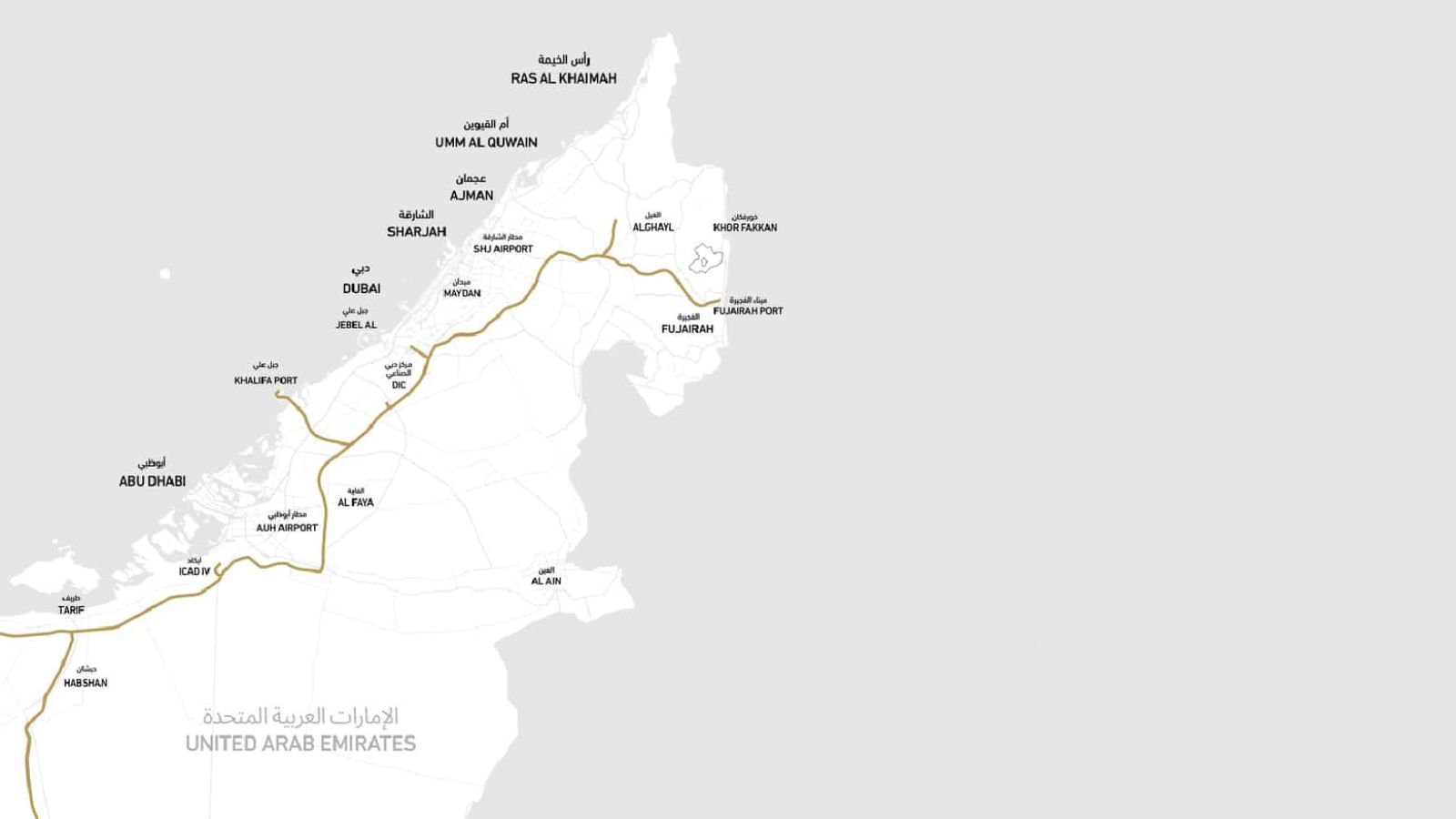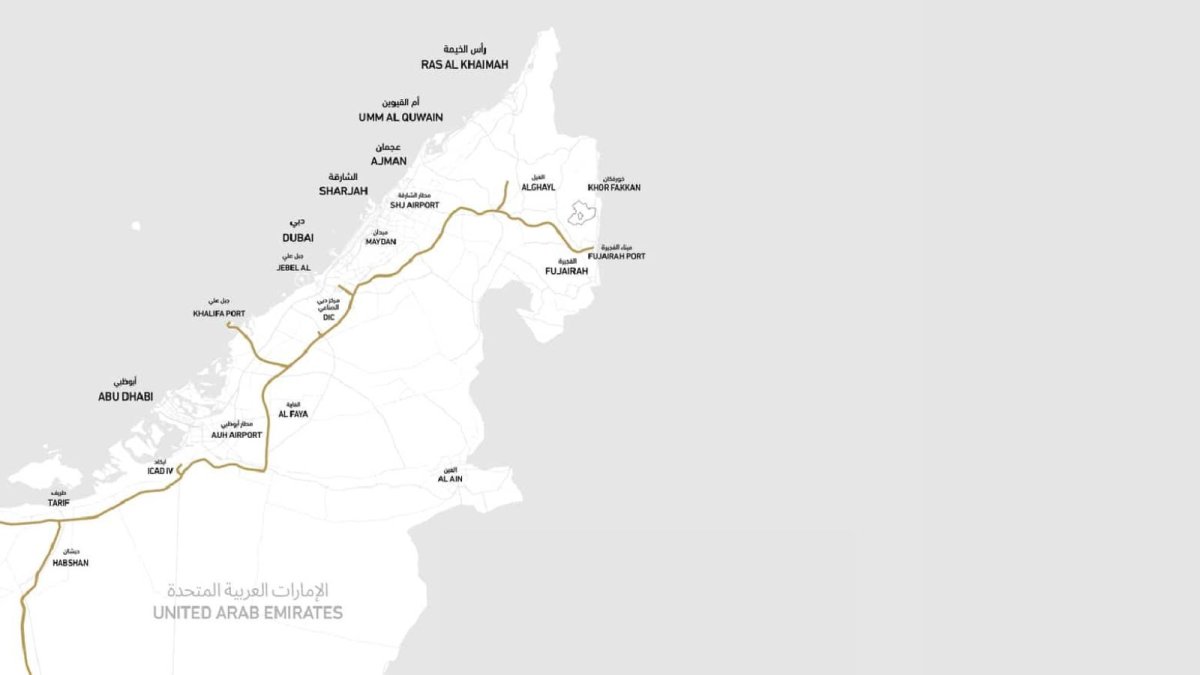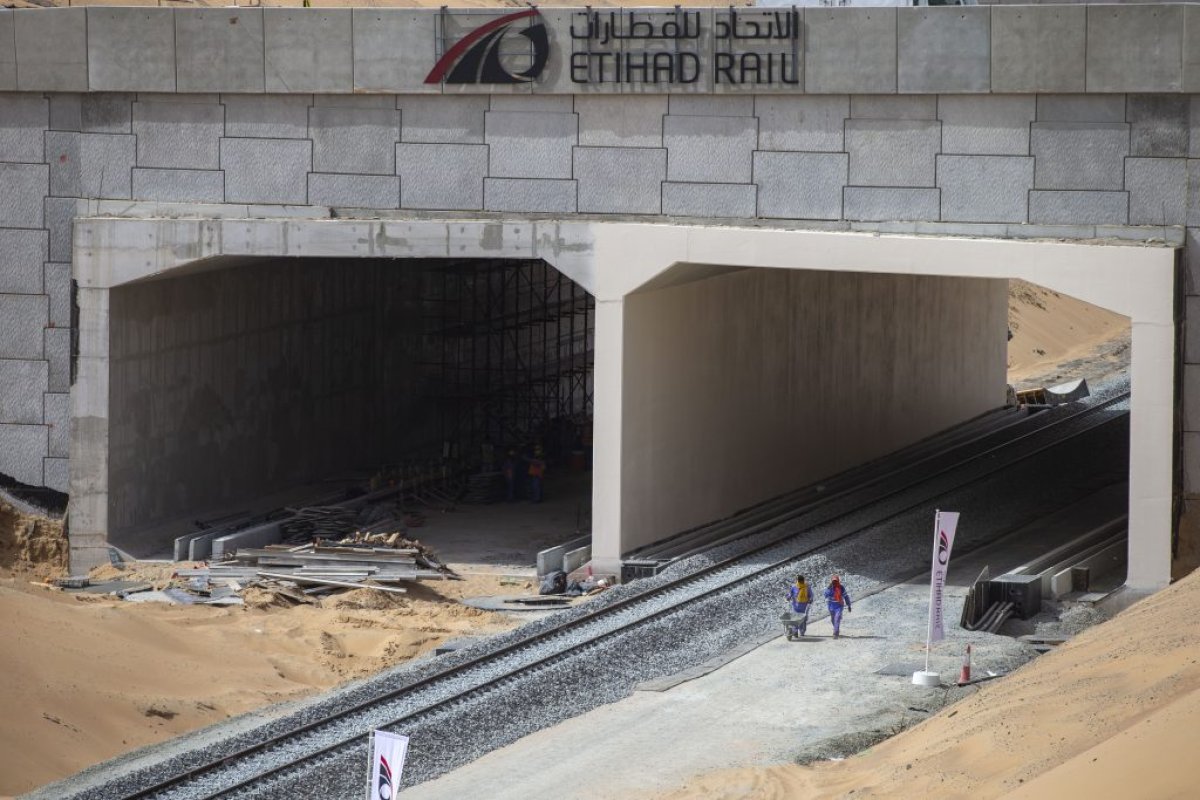
Work on the Etihad Rail passenger service, which will connect all seven emirates through a 900-kilometer rail network, is advancing throughout the United Arab Emirates.
The high-speed rail project, which aims to reach speeds of 217 miles per hour, has commenced construction on stations in Sakamkam, Fujairah, as well as bridge infrastructure across the route, which will connect every emirate in the country once completed.
Newsweek reached out to Etihad Rail via email for comment.
Why It Matters
The Etihad Rail project was designed to connect all seven emirates in the UAE by high-speed rail, while also linking together two of the most important cities in the Middle East: Dubai and Abu Dhabi, both of which are economic and tourist powerhouses in the region.
What To Know
The official map of the rail project, released by Etihad Rail, shows stops in all seven emirates, ranging from Al Sila in the west to Fujairah Port on the east coast, facing out towards the Gulf of Oman.
The journey from Abu Dhabi to Al Ruwais, located in the east near the border with Saudi Arabia, will take just over one hour to complete. The trip from Abu Dhabi to Fujairah is projected to take approximately one hour and 40 minutes.

Etihad Rail
UAE officials predict that this could result in a 30-40 percent reduction in commuting times. Each train is expected to have a capacity of roughly 400 people.
The project released new images of bridge infrastructure in May, which showed reinforced structures that can withstand trains travelling at over 200 miles per hour.
Etihad Rail aims to transport approximately 36 million passengers annually by 2030. The network will connect 11 cities and regions to other key areas, including Al Ruwais, Al Mirfa, Dubai, Sharjah, and Al Dhaid.

Etihad Rail
What People Are Saying
Etihad Rail, in a statement: “The project will enable seamless connectivity between Abu Dhabi and Dubai, significantly reducing travel times. It will also enhance the quality of life for citizens, residents and visitors while strengthening socioeconomic ties between the two emirates.
“Additionally, the high-speed train will reinforce infrastructure to drive business growth and unlock new investment opportunities across key sectors such as logistics and tourism, contributing to sustainable development for generations to come.”
What Happens Next
The Dubai to Abu Dhabi portion of the track is scheduled to open in 2027, with other parts of the network continuing construction over the next decade.




